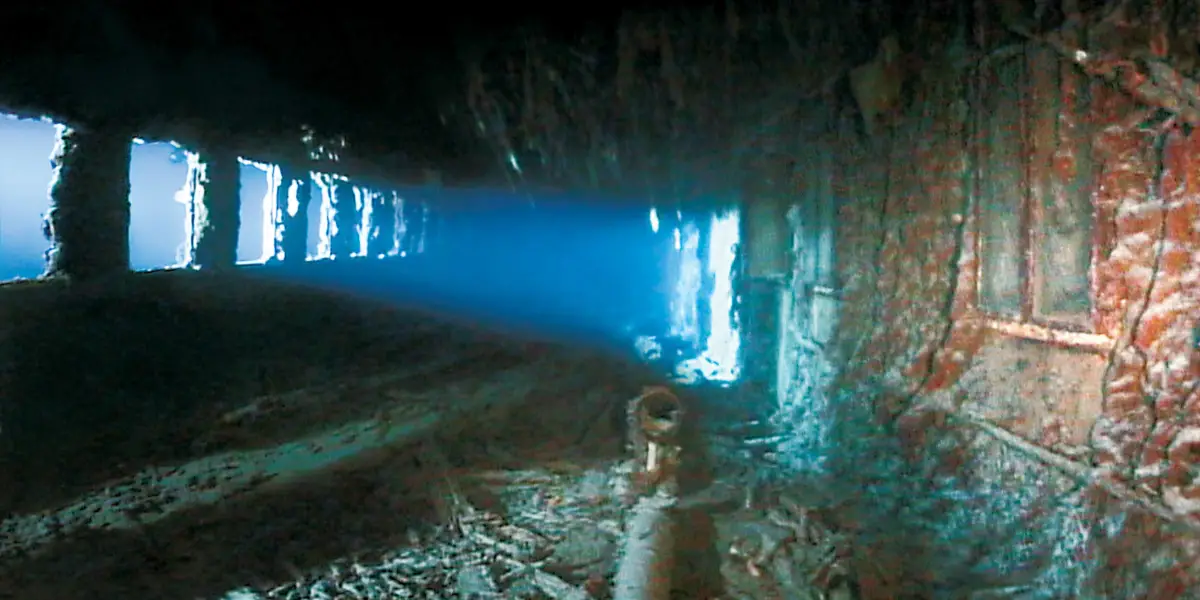Champagne bottles managed to stay intact on the wreckage of the Titanic and many people have been left curious as to why.
Even though it sank over 100 years ago, there still remain some fascinating questions about the Titanic.
But one mystery from the 1912 wreckage has captured the internet’s attention this week.
People are wondering how it’s possible that unopened champagne bottles were found, unimploded, in the wreckage of the boat underneath the Atlantic Ocean.
And now, experts have offered their insight into how these bottles mysteriously survived under the immense pressure at the bottom of the water…
Related Article: Boss Of Titanic Submarine Made Astonishing Confession Before It Vanished
Related Article: ‘Claustrophobic’ Photos Show How Small Submarine Is That Went Missing During Titanic Tour
The fact came to the internet’s attention thanks to an inquisitive Reddit thread.
1898-1900 champagne bottle still containing champagne recovered from the Titanic
byu/Ruin369 ininterestingasfuck
“How come the Titanic wreck champagne bottles didn’t implode?” a forum user asked.
“I’m just very confused as to how these made it to the bottom without smashing. I don’t understand physics at all, but is it because they were full of champagne? But wouldn’t the air inside have compressed? How are they still sealed? Wouldn’t the cork have gotten smaller like the Styrofoam cups the titan took down?”
Well, one expert replied and explained it’s all down to the pressure that already exists within a fizzy wine bottle.

“Champagne is already pressurised – which is why it pops upon opening. The corks in the other bottles of regular wine were forced down into the bottle due to the external pressure, but the existing pressure inside the champagne bottles meant that they were more robust to external pressure – apparently, it’s still drinkable!”
Another questions: “Yeah but pressurised to the extent that it saved them from the sort of pressure at the bottom of the Atlantic!? Mad!”
To which a further Redditor enlightened us: “Champagne is mostly water. Water is incompressible, so it can help resist the pressures they encounter at the bottom of the ocean.
“I also can’t help but think that those bottles are thicker than today’s, so the volume within the bottle that’s unfilled is at least well supported. It’s a small volume that needs to resist the pressure without the backing of the water, so the glass can resist the pressure in that area on its own- 5,880PSI water pressure over a small area can be resisted by thicker glass.”
Related Article: Expert Shares The Reason Nobody Has Ever Found Human Remains Inside The Titanic
Related Article: Child Actor Who Played Little Boy In Titanic Still Getting Paid 25 Years Later
Let’s take a closer look at the science, shall we?
IFL Science explains that: “Implosions are where objects collapse in on themselves, the result of a difference between internal and external pressure.”
The site goes on to explain that the pressure within the Titanic wreck should have been enough to smash the champagne bottles, so there has to be a further explanation.
YouTube channel The Dropzone opines that: “It would be amazing if the seal actually held, but I reckon all the seals have already been compromised and the pressure inside equalised with the pressure outside when the ship sank on its way down back in 1912.”
Do you have a story for us? If so, email us at [email protected]. All contact will be treated in confidence.






